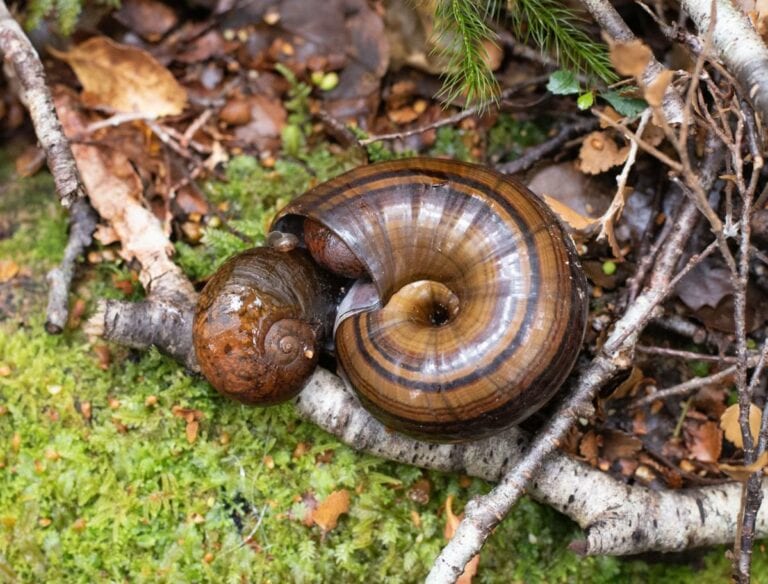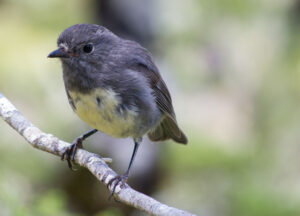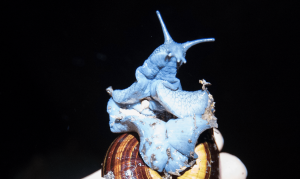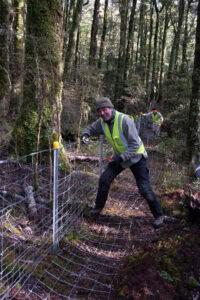Project Janszoon has been monitoring endangered land snails to assess the threats of climate change and predation by introduced pests.
New Zealand’s land snails are as unique as kiwi, kakapo and tuatara. They are carnivorous and hunt at night for worms and other critters, but they are also endangered species. Introduced pests like possums, rats, hedgehogs and thrushes all have snails on the menu. Environmental changes due to climate change and the recent recovery of weka populations in the area is also starting to impact our native snail populations.
For the last seven years, Project Janszoon Scientific Advisor Ruth Bollongino has been monitoring the endangered land snail populations of Powelliphanta hochstetteri and Rhytida oconneri in the Canaan and Wainui areas. R. oconneri is of particular importance as it is only found on Takaka Hill and a few places in Golden Bay. Ruth uses nocturnal mark-recapture – an intensive monitoring method that collects data about population size and demographic data like age structure, mortality and recruitment.
This study has been of great value, giving us the information we needed to move at pace to protect the remaining population of snails at the Wainui location where snail populations have plummeted by 70% per annum, mainly caused by weka predation and to a lesser extent by drought. You can read about how we are working to protect the land snails here
The following three reports share the findings from this work. Click on the links to download or read the reports.




